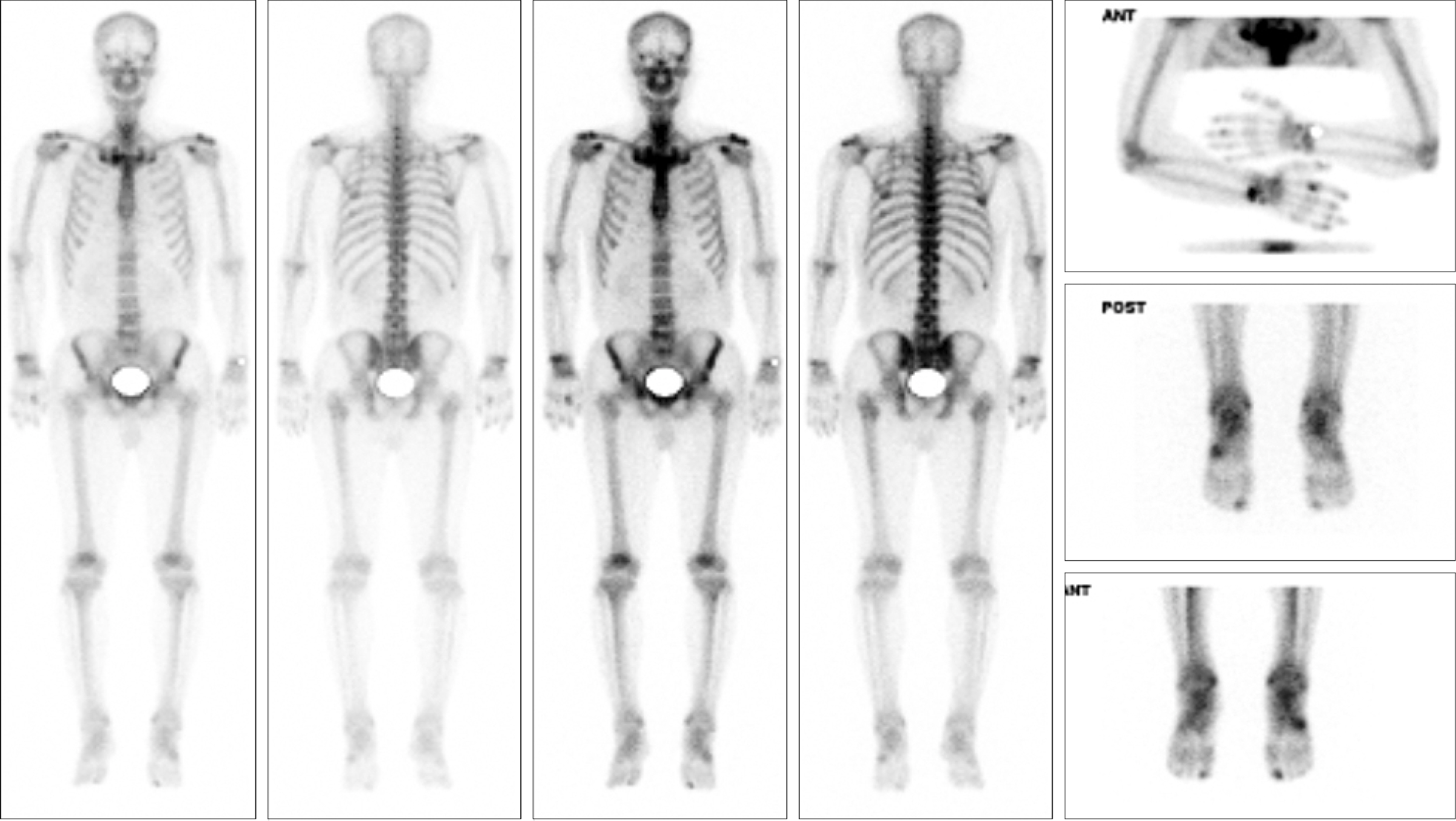J Korean Rheum Assoc.
2007 Sep;14(3):285-290. 10.4078/jkra.2007.14.3.285.
A Case of Rat Bite Fever Arthritis
- Affiliations
-
- 1Department of Allergy-Rheumatology, Ajou University School of Medicine, Suwon, Korea. chsuh@ajou.ac.kr
- KMID: 2202180
- DOI: http://doi.org/10.4078/jkra.2007.14.3.285
Abstract
- Rat bite fever is a rare, systemic illness caused by Streptobacillus moniliformis or Spirillum minus following a rat or other rodent bite. Characteristically, fever develops abruptly with maculopapular skin rash after an incubation period of two to ten days, and asymmetric migrating polyarthritis starts later in up to 50% of patients. The arthritis involves the knees, shoulders, elbows, wrists and hands, which may either be suppurative or non-suppurative. Although most cases seem to resolve spontaneously within two weeks, the mortality in untreated cases is around 10~15%. The response to antibiotic treatment is good and early diagnosis is the most important prognostic factor. We report a patient who developed arthritis with fever after biting by rat.
Keyword
MeSH Terms
Figure
Reference
-
1). Parker RH. Rat bite fever. In:. Hoeprich PD, Jordan MC, editors. eds.Infectious disease. 4th ed.p. 1310–2. Philadelphia, Lipincott;1989.2). Washburn RG. Streptobacillus moniliformis (rat bite fever). In:. Mandell GL, Bennett JE, Dolin R, editors. eds.Mandel, Douglas and Bennett's principles and practice of infectious disease. 5th ed.p. 2422–4. Philadelphia, Churchill-Livingstone;2000.3). Anderson LLC., Leary SL., Manning PJ. Rat-bite fever in animal research laboratory personnel. Lab Anim Sci. 1983. 33:292–4.4). McEvoy MB., Noah ND., Pilsworth R. Outbreak of fever caused by Streptobacillus moniliformis. Lancet. 1987. 2:1361–3.
Article5). Holroyd KJ., Reiner AP., Dick JD. Streptobacillus moniliformis polyarthritis mimicking rheumatoid arthritis: an urban case of rat bite fever. Am J Med. 1988. 85:711–4.6). Stehle P., Dubuis O., So A., Dudler J. Rat bite fever without fever. Ann Rheum Dis. 2003. 62:894–6.
Article7). Hockman DE., Pence CD., Whittler RR., Smith LE. Septic arthritis of the hip secondary to rat bite fever: a case report. Clin Orthop Relat Res. 2000. 380:173–6.8). Thong BY., Barkham TM. Suppurative polyarthritis following a rat bite. Ann Rheum Dis. 2003. 62:805–6.
Article9). Dendle C., Woolley IJ., Korman TM. Rat-bite fever septic arthritis: illustrative case and literature review. Eur J Clin Microbiol Infect Dis. 2006. 25:791–7.
Article10). Rumley RL., Patrone NA., White L. Rat-bite fever as a cause of septic arthritis: a diagnostic dilemma. Ann Rheum Dis. 1987. 46:793–5.
Article11). Cunningham BB., Paller AS., Katz BZ. Rat bite fever in a pet lover. J Am Acad Dermatol. 1998. 38:330–2.
Article12). Rupp ME. Streptobacillus moniliformis endocarditis: case report and review. Clin Infect Dis. 1992. 14:769–72.
Article13). van Nood E., Peters SH. Rat-bite fever. Neth J Med. 2005. 63:319–21.
- Full Text Links
- Actions
-
Cited
- CITED
-
- Close
- Share
- Similar articles
-
- Arthritis as a cause of open bite
- Multifocal Pyogenic Arthritis on four Joints: A Case Roport
- A Case of Rat Mite Dermatitis
- Pyogenic Arthritis of the Metacarpophalangeal Joint Treated with External Fixation in Adolescent
- A Case of Adult Onset Still's Disease That Presented with Erythema Multiforme-like Eruption




